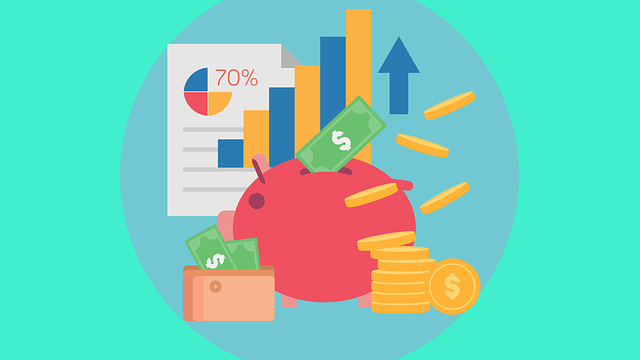How do you invest in bonds? Capacity review

How do you invest in bonds? Capacity review
What are bonds?
Unlike stocks, which are equity shares, bonds are defined as a debt instrument. Practically speaking, this means that when we buy bonds, we are de facto giving a loan to their issuer. In return – after the specified deadline – we can count on the return on the invested money, which was increased according to the previously agreed upon interest.
Most importantly, in a large part of cases, we don’t have to wait for the bonds to redeem. We can also sell it to other investors in the secondary market (more on this later in the text). Thanks to this, we not only retain the right to the interest earned until then, but also gain the possibility of prematurely getting our money back. Therefore, a bond is a tool with greater flexibility, for example, a term deposit (most deposits can be terminated before the maturity date, but then we lose the right to receive interest).
The yield on bonds – like other capital gains (such as interest on deposits) – is subject to 19% of what is called the Belka tax (see How to Calculate the Belka Tax Correctly).
Bond types
There are several different types of bonds in the market. Depending on their issuer (who sells the bonds), we can deal, among other things, by with bonds: treasury (issued by the Minister of Finance), municipal, also called municipal (issued by local governments, such as municipalities), corporate (issued by foundations ) and the cooperative (the issuers of which are cooperative banks).
Like, for example, deposits, bonds may have a different maturity date:
- short-term bonds – up to one year,
- Medium-term bonds – from 1 to 5 years,
- Long-term bonds – more than 5 years,
- perpetual bonds (keyboards) – they do not have a fixed maturity date; Its owner receives a so-called permanent pension, that is, an endless flow of interest.
The method of calculating interest may also vary. We distinguish:
- fixed rate bonds,
- floating rate bonds (the interest rate is often set on the basis of the WIBOR 6M interbank market rate, which is increased by an additional issuer’s margin),
- Interest-free bonds, also known as zero-coupon or discount bonds (in their case, the profit comes from discounting the face value, not from interest; for example, a 12-month bond is issued at a symbolic price of PLN 100 at PLN 97, and is redeemed After one year; the amount of the discount, and at the same time the investor’s total profit is 100-97 = 3 PLN).
The most popular among Polish issuers are floating rate bonds, while discount bonds account for less than 1% of the market.
How do you buy bonds?
Access to bonds in Poland is primarily possible through the Catalyst Stock Exchange, which is part of the Warsaw Stock Exchange .
As with other financial instruments, we cannot buy bonds on Catalyst directly. We have to do this through an intermediary, that is, usually a brokerage firm ( in this text we look at the technical nuances of investing in bonds, and also analyze the selected offers).
Since most bonds are issued to bearer (although there are registered bonds as well), it is also possible to trade them over the counter – these securities can be bought, sold and freely exchanged with each other. However, you must then make changes to the KDPW register, thereby informing the broker of the relevant documents (for example, to the point of sale of bonds in the case of Polish treasury bonds). Thus OTC trading is limited to finding a suitable contractor, for example between friends and family or from advertising on portals and forums.
Is it worth buying treasury bonds?
Treasuries are guaranteed by the state treasury and, therefore, at least in theory, are risk-free. According to the provisions of the Public Finance Act, expenditure on servicing the debt of the public treasury is made before all other expenditures. This means that in case of possible problems, the state will first redeem our bonds and only then incur other expenses. This makes government bonds the safest form of savings.
PKO BP is responsible for selling Treasuries (also referred to as savings bonds) in Poland. These securities can be purchased at any bank branch and at the customer service points of Dom Maklerski PKO BP. Treasuries can also be purchased remotely:
You do not need a securities account to purchase Polish Treasuries. During the first transaction, a free registration account is created automatically.
Polish treasury bonds are sold on a continuous basis – every month there is another issue that lasts from the first day to the last day of the month. All bonds have a fixed price of PLN 100.
The profitability of Polish treasury bonds in general increases with the extension of the maturity date. The offered interest rate is also affected by the budget situation in our country. The interest offered currently ranges from 0.5% (that’s what the 3-month savings bonds distributed by the Ministry of Finance offer) to about 1.7% in the case of 30-year bonds listed on the Catalyst Market (as of September 2020). The offer also includes bonds, where the interest rate depends on the rate of inflation ( details of the Treasury offer for individual investors can be found here ).
Family Bonds Offer Family
Bonds is a type of bond intended for Family 500+ beneficiaries. According to the current offer (September 2020) of the Ministry of Finance, these types of securities allow you to invest capital for a period of 6 or 12 years. Family bonds feature a variable interest rate, the amount of which depends on the rate of inflation. For example – when buying “twelve-year-olds”, in the first year of saving we will receive interest at the level of 2.0%, while in subsequent years the interest will be equal to the official inflation rate of the consumer price index, an increase of 1.5 this type allows you One solution is to protect your capital from the negative impact of rising prices. It is also a great way to secure a financial future for our children.
Foreign Treasury Bonds – Interest Rate
Direct purchase of foreign bonds is possible thanks to some brokerages, such as CDM Pekao. However, the value of such a deal is a serious drawback here. For example, the aforementioned CDM Pekao, in the case of most cases, requires an investment of at least 10,000 or even 100,000. Euros (or dollars), and a brokerage fee of 0.3% up to 1.3% is charged.
It should also be remembered that foreign bonds are issued in foreign currencies, and not in Polish zlotys. Even if the rate of return looks attractive, you should also take into account the possible fluctuations in currency rates, which can significantly reduce your real profit and may cause a loss. On the other hand, positive fluctuations in exchange rates can significantly increase our profits.
The chart below displays the current interest rate on 10-year Treasuries in selected countries. In the case of countries like Germany or Switzerland – due to the negative interest rates in force in these countries and very high investment security – the interest offered is negative and amounts to -0.2%. Currently, you can earn a relatively large amount by investing in bonds of China , Hungary and Chile. At the other end of the scale, on the other hand, we have debt issued by countries with different economic problems – Turkey and Kenya. In their case, the interest offered is higher than 10% (but the risk of not redeeming the bonds also increases).
Click to enlarge
Buying bonds through an investment fund
Clients with smaller financial resources can use the indirect method, which is to purchase participating units in bond funds.
This type of investment is a good way to diversify your capital and thus reduce risk. Funds do not buy just one series of bonds, but may have hundreds of them in their portfolios, for example, 2-year German bonds, 5-year US bonds, and 6-year Mexican bonds. Of course, it all depends on the investment profile of the fund.
In order to find the optimal solution, we recommend visiting the website of a particular fund and reading the legal documents. Specialized websites dedicated to this type of tool may also be useful .
Where do you buy municipal bonds?
Buying municipal bonds can be challenging for the individual investor, at least when it comes to the primary market. Most versions are private, which means that the view is directed at a select group of entities (less than 150). Oftentimes, municipalities also prefer institutional investors rather than individuals (because it gives a greater chance of selling the pool of bonds issued). The high price can also be a problem – one bond often costs PLN 10,000 or even PLN 100,000.
In most cases , it is much easier to buy such bonds on the secondary market – through the Catalyst exchange . But the problem in this case is very low liquidity. It often happens that the order sheet for the gadget we are interested in is completely empty, and even if a person places his offer for sale, he is likely to expect a price slightly higher than the one offered in the original version. However – buying municipal bonds can be a very profitable business (the interest they offer usually exceeds 1-2 percentage points of the yield on Treasury bonds)
By the way, it is worth knowing that local government units in Poland – such as the Ministry of the State Treasury – are responsible for their obligations with all their property. In addition, regulations limit the possibility of indebtedness of local authorities to a certain extent, which in turn makes municipal bonds a truly safe and reliable tool.
Where do you buy corporate bonds?
Access to the corporate bond market is possible thanks to the Catalyst Exchange. In terms of the number of issuers, it is the largest segment of the Polish bond market.
As with municipal bonds, corporate bonds can also be issued in a private or public offering. Usually, the former is chosen by smaller companies because it requires less formalities (eg no need to prepare a prospectus). General issues, in turn, are usually regulated by brokerages, so information about them can often be found on the websites of banks. Usually a single corporate bond has a face value of PLN 100 or PLN 1,000. This means that even a person with a relatively small wallet can become its owner.
Investing in bonds listed on foreign stock exchanges
You can also invest in bonds of foreign companies listed, for example, on the stock exchange in Stuttgart or Milan. It can be purchased through selected brokerages (eg CDM Pekao mentioned above). But also in this case (as was the case with “Treasury bonds”) we must take into account the large commissions and the need to make a minimum transaction. 10 thousand and 100 thousand or even 200 thousand currency units.
How much are the commissions in brokerage houses?
Investing in domestic bonds on the stock exchange is associated with relatively lower costs than in the case of stocks.
The commissions for trading these securities are usually between 0.10% and 0.20% of the transaction value (which is on average twice what it is for stocks). However, it must be remembered that the minimum commission amount is usually 3-4 PLN.
In practice, this means that you have to buy at least a dozen bonds worth one hundred zlotys in order for the purchase to be cost-effective (of course, it is also possible to buy a smaller amount, but the commission will then amount to a few percent of the value of Deal).
Check our rating and choose the best brokerage company
According to the editors
Bonds are a commendable tool, and an exciting alternative (or complement) to deposits or savings accounts. It is a safe guarantee, often with a higher rate of return than traditional bank deposits. We can buy bonds directly in the primary market and in the secondary trade (eg on the Catalyst exchange or directly from someone interested in selling).
Although domestic treasuries are the most common, we can also buy the securities of companies, cities and even other countries with little effort. The great advantage of this type of tool – as we mentioned at the beginning – is that it can be resold before it is ripe. Thanks to this, we do not have to “freeze” our capital for ten years, but we can withdraw from investment faster.




One Comment